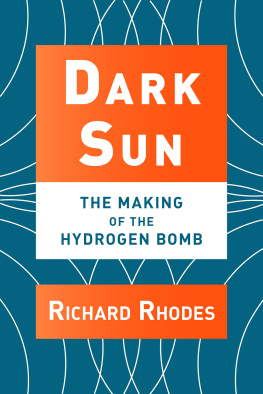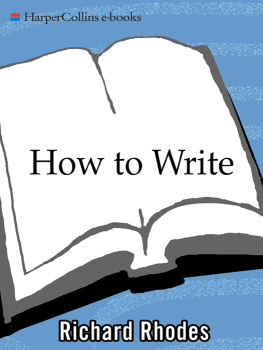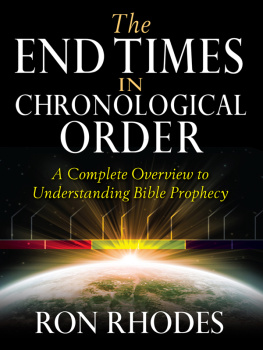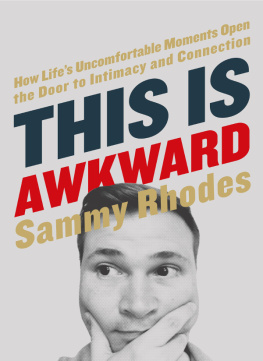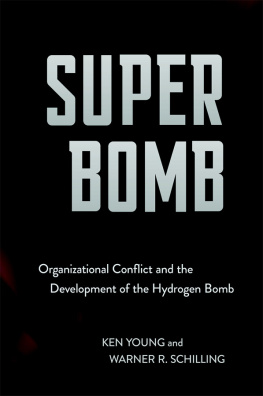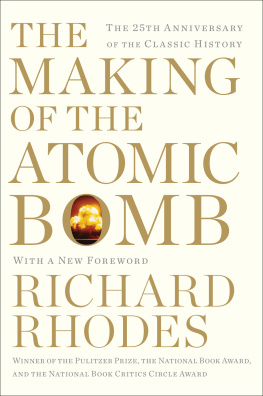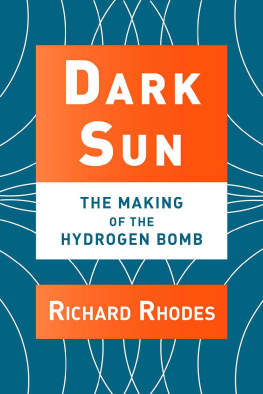Rhodes - Dark Sun: The Making of the Hydrogen Bomb
Here you can read online Rhodes - Dark Sun: The Making of the Hydrogen Bomb full text of the book (entire story) in english for free. Download pdf and epub, get meaning, cover and reviews about this ebook. City: London;New York, year: 1995, publisher: Simon & Schuster, genre: Non-fiction. Description of the work, (preface) as well as reviews are available. Best literature library LitArk.com created for fans of good reading and offers a wide selection of genres:
Romance novel
Science fiction
Adventure
Detective
Science
History
Home and family
Prose
Art
Politics
Computer
Non-fiction
Religion
Business
Children
Humor
Choose a favorite category and find really read worthwhile books. Enjoy immersion in the world of imagination, feel the emotions of the characters or learn something new for yourself, make an fascinating discovery.
- Book:Dark Sun: The Making of the Hydrogen Bomb
- Author:
- Publisher:Simon & Schuster
- Genre:
- Year:1995
- City:London;New York
- Rating:3 / 5
- Favourites:Add to favourites
- Your mark:
- 60
- 1
- 2
- 3
- 4
- 5
Dark Sun: The Making of the Hydrogen Bomb: summary, description and annotation
We offer to read an annotation, description, summary or preface (depends on what the author of the book "Dark Sun: The Making of the Hydrogen Bomb" wrote himself). If you haven't found the necessary information about the book — write in the comments, we will try to find it.
Rhodes: author's other books
Who wrote Dark Sun: The Making of the Hydrogen Bomb? Find out the surname, the name of the author of the book and a list of all author's works by series.
Dark Sun: The Making of the Hydrogen Bomb — read online for free the complete book (whole text) full work
Below is the text of the book, divided by pages. System saving the place of the last page read, allows you to conveniently read the book "Dark Sun: The Making of the Hydrogen Bomb" online for free, without having to search again every time where you left off. Put a bookmark, and you can go to the page where you finished reading at any time.
Font size:
Interval:
Bookmark:
BOOKS BY RICHARD RHODES
FICTION
Sons of Earth
The Last Safari
Holy Secrets
The Ungodly
VERITY
Visions of Technology
Deadly Feasts
How to Write
Nuclear Renewal
Making Love
A Hole in the World
Farm
The Making of the Atomic Bomb
Looking for America
The Inland Ground
Thank you for purchasing this Simon & Schuster eBook.
Sign up for our newsletter and receive special offers, access to bonus content, and info on the latest new releases and other great eBooks from Simon & Schuster.
C LICK H ERE T O S IGN U P
or visit us online to sign up at
eBookNews.SimonandSchuster.com
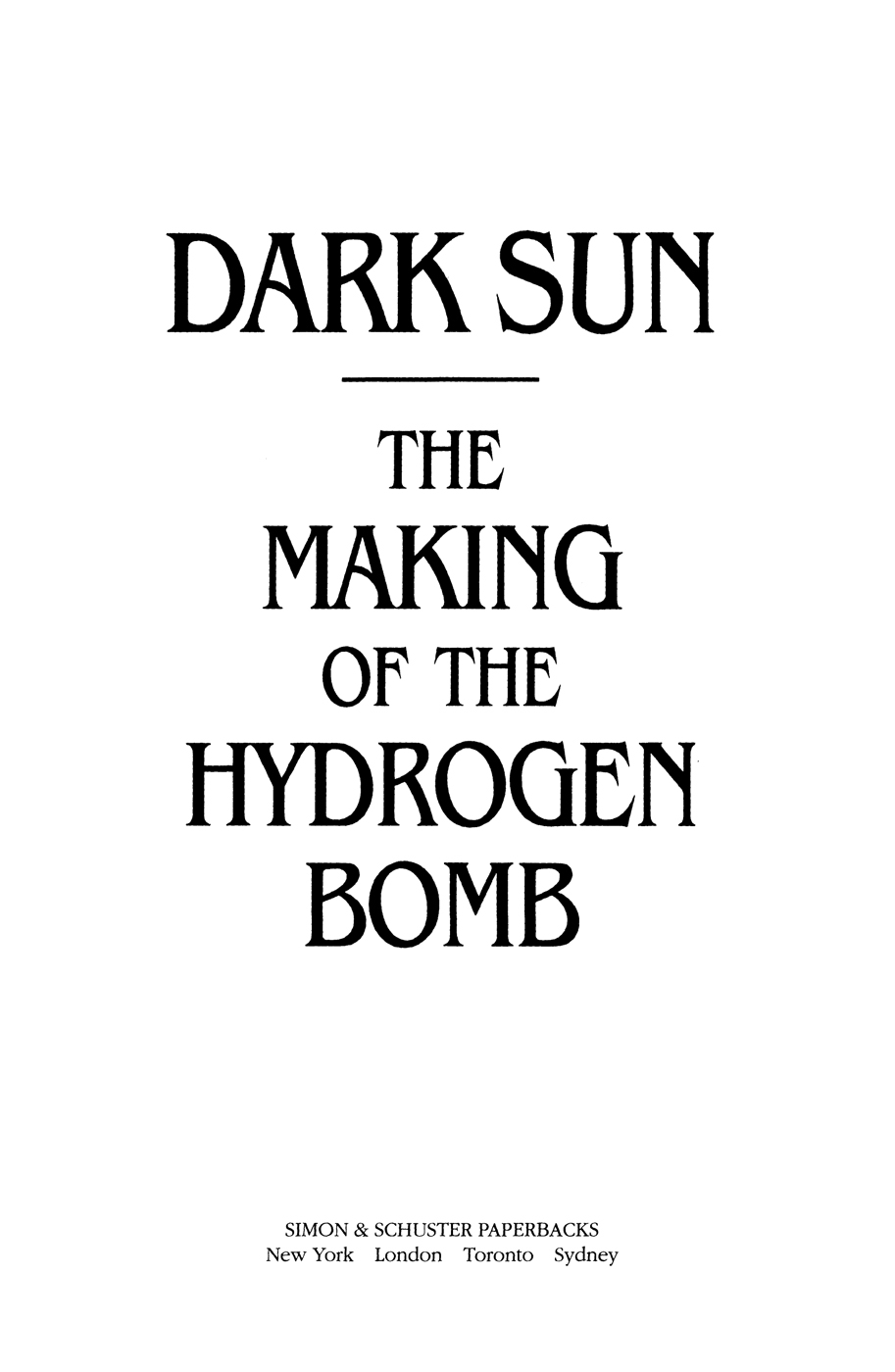
Part One
A Choice Between Worlds
Part Two
New Weapons Added to the Arsenals
Part Three
Scorpions in a Bottle
F OR A RTHUR L. S INGER , J R .
The author acknowledges with gratitude the support
of the John D. and Catherine T. MacArthur Foundation
and the Alfred P. Sloan Foundation in the research
and writing of this book.
T HIS BOOK IS PUBLISHED AS PART OF AN
A LFRED P. S LOAN F OUNDATION P ROGRAM
Technology Series
T ECHNOLOGY IS THE APPLICATION of science, engineering and industrial organization to create a human-built world. It has led, in developed nations, to a standard of living inconceivable a hundred years ago. The process, however, is not free of stress; by its very nature, technology brings change in society and undermines convention. It affects virtually every aspect of human endeavor: private and public institutions, economic systems, communications networks, political structures, international affiliations, the organization of societies and the condition of human lives. The effects are not one-way; just as technology changes society, so too do societal structures, attitudes and mores affect technology. But perhaps because technology is so rapidly and completely assimilated, the profound interplay of technology and other social endeavors in modern history has not been sufficiently recognized.
The Sloan Foundation has had a long-standing interest in deepening public understanding about modern technology, its origins and its impact on our lives. The Sloan Technology Series, of which the present volume is a part, seeks to present to the general reader the stories of the development of critical twentieth-century technologies. The aim of the series is to convey both the technical and human dimensions of the subject: the invention and effort entailed in devising the technologies and the comforts and stresses they have introduced into contemporary life. As the century draws to an end, it is hoped that the Series will disclose a past that might provide perspective on the present and inform the future.
The Foundation has been guided in its development of the Sloan Technology Series by a distinguished advisory committee. We express deep gratitude to John Armstrong, S. Michael Bessie, Samuel Y. Gibbon, Thomas P. Hughes, Victor McElheny, Robert K. Merton, Elting E. Morison and Richard Rhodes. The Foundation has been represented on the committee by Ralph E. Gomory, Arthur L. Singer, Jr., Hirsh G. Cohen, Raphael G. Kasper and A. Frank Mayadas.
Alfred P. Sloan Foundation

Fundamentally, and in the long run, the problem which is posed by the release of atomic energy is a problem of the ability of the human race to govern itself without war.
A R EPORT OF A P ANEL OF C ONSULTANTS ON D ISARMAMENT OF THE S ECRETARY OF S TATE , J ANUARY 1953
.
Readers unfamiliar with Russian names may take comfort in knowing that they are transliterated phonetically from their original Cyrillic, an alphabet borrowed from Greek and Hebrew. Sounding them out aloud two or three times usually fixes them in memory. A Glossary of Names, with approximate pronunciations, begins on .
T HE WAR WAS OVER . The troops were coming home. Sick of mud and olive drab, of saltwater showers and sweltering holds, twelve million American soldiers and sailors counted their service points to see how soon they could ship out for Brooklyn and Ukiah and St. Joe. Tens of thousands of warplanes, ships, tanks, artillery pieces sat abandoned, the full industrial output of a prosperous nation, the work the women and the older men had done, soon to be junked. The Second World War had been the most destructive war in history, obliterating fifty-five million human lives. The German invasion of the Soviet Union and the obdurate Soviet response had accounted for more than half those deaths; with them, in Germany and the Soviet Union both, had followed general ruination. In the end, out in the Pacific, two planes carrying two bombs had compelled the wars termination. The two atomic bombs, ferocious as minor suns, had given an emperor descended from a god reason to surrender. The war was over. It was hard to imagine that there might ever be another.
Luis Alvarez, an American experimental physicist, a tall, ruddy Californian with ice-blond hair, had understood the message of the bomb on his way back from Hiroshima. Alvarez collected adventures. He liked to be on hand when history was made. After he invented ground-controlled approach radar he had flown a prototype unit to wartime England and personally tested it talking down British bombers returning through fog. At the secret laboratory at Los Alamos in New Mexico where the atomic bombs were designed and built by hand, he had arranged to observe intensely radioactive test explosions up close in a lead-lined tank. He had invented a new electric detonation system for the Fat Man plutonium implosion bomb that fired its multiple detonators with microsecond simultaneity. As the time to deploy the revolutionary new weapons approached, Alvarez had found a way to justify flying the historic first mission.
The Hiroshima bomb, Little Boy, was a uranium gun. It used sixty-four kilograms of rare uranium 235, all of that dense, purple-black metal the United States had been able to accumulate up to the end of July 1945. The uranium gun was an extremely conservative design. We were confident it On the intercom the pilot confirmed that the aiming had been excellent; Alvarez could not see the city because the city had been destroyed.
On the way back to Tinian, the island in the Marianas from which the atomic bombing had been staged, Alvarez had passed the time writing a letter to keep for his son Walter, then four years old. This is the first grownup letter I have ever written to you, the physicist began. He reminded his son that they had inspected a B-29 together in Albuquerqueprobably you will remember climbing thru the tunnel over the bomb bay, he teased him, as that really impressed you at the time. Then Alvarez described what has happened to aerial warfare as a result of the Enola Gay s mission that morning:
Last week the 20th Air Force... put over the biggest bombing raid in history, with 6,000 tons of bombs (about 3,000 tons of high explosives). Today, the lead plane in our formation dropped a single bomb which probably exploded with the force of 15,000 tons of high explosive. That means that the days of large bombing raids, with several hundred planes, are finished. A single plane disguised as a friendly transport can now wipe out a city....
What regrets I have about being a party to killing and maiming thousands of Japanese civilians this morning are tempered with the hope that this terrible weapon we have created may bring the countries of the world together and prevent further wars. Alfred Nobel thought that his invention of high explosives would have that effect, by making wars too terrible, but unfortunately it had just the opposite reaction. Our new destructive force is so many thousands of times worse that it may realize Nobels dreams.
Next pageFont size:
Interval:
Bookmark:
Similar books «Dark Sun: The Making of the Hydrogen Bomb»
Look at similar books to Dark Sun: The Making of the Hydrogen Bomb. We have selected literature similar in name and meaning in the hope of providing readers with more options to find new, interesting, not yet read works.
Discussion, reviews of the book Dark Sun: The Making of the Hydrogen Bomb and just readers' own opinions. Leave your comments, write what you think about the work, its meaning or the main characters. Specify what exactly you liked and what you didn't like, and why you think so.

